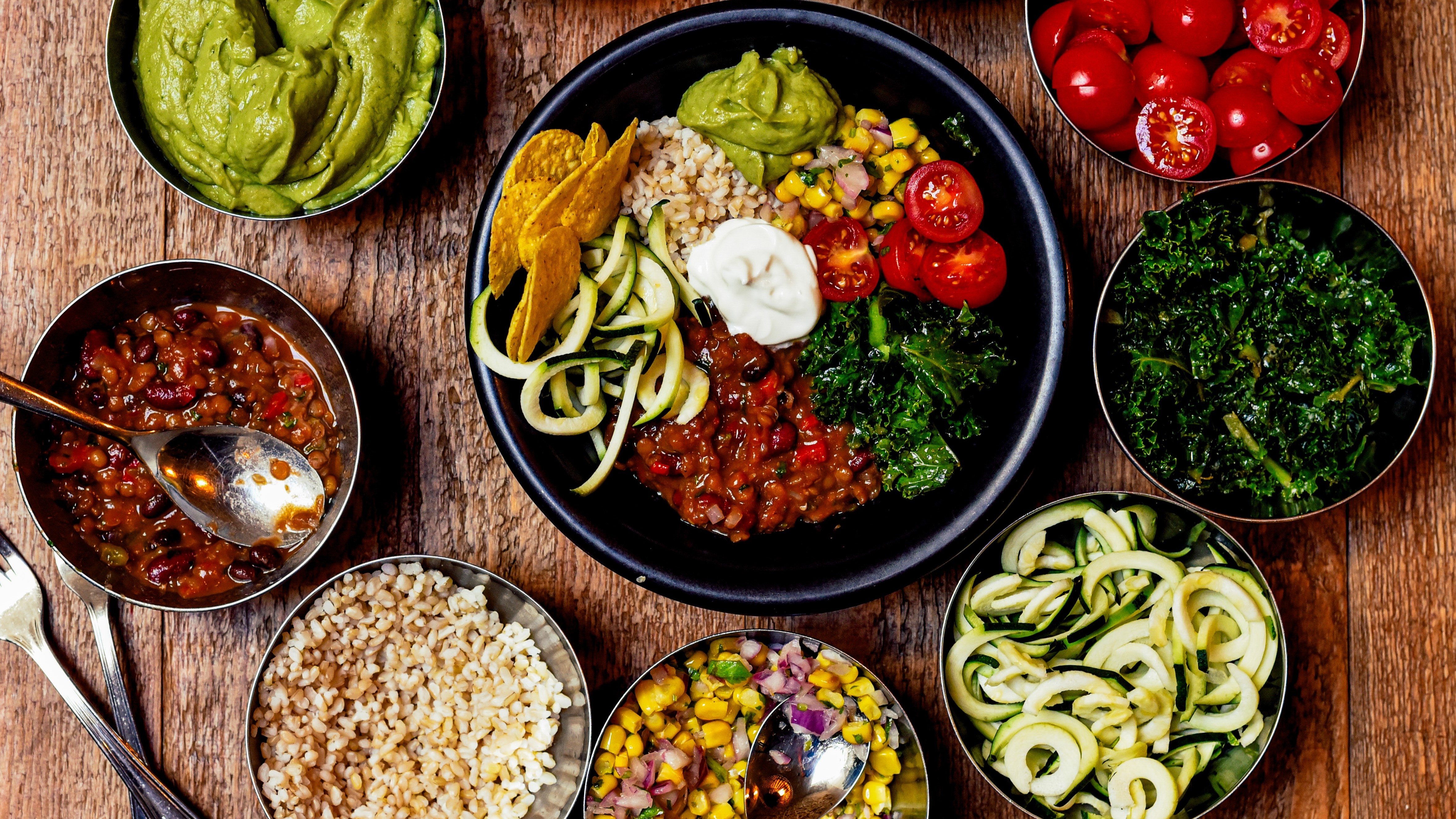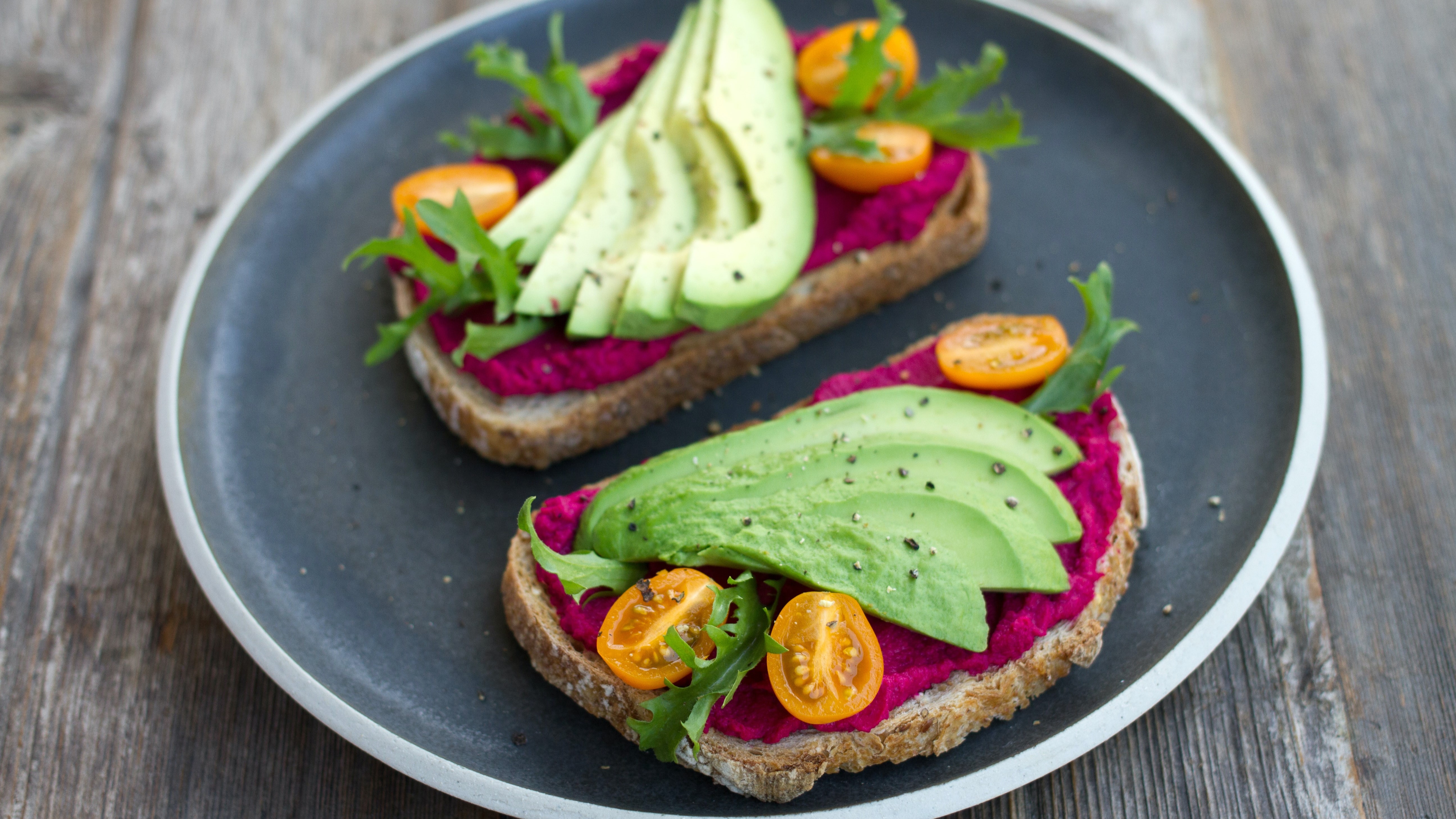Ready to improve your health? Then a whole food based diet may well be what the doctor ordered.
As you know on Planet Health, we don’t bother with traditional diets. They aren’t really necessary to improve our health.
Because, come on… who wants to follow strict rules, deny favourite foods, and feel generally miserable? Who enjoys bringing a calculator to the kitchen?
Not me. 😃
Instead, we simply need to make small changes to our current diets to see incredible results. One of these changes is to add more whole foods to your daily eating. By doing this you will improve your health, mood and life.
Sounds good, right?
So sit back, grab a bag of popcorn (yep, that’s whole foods based!) and enjoy this guide to whole food eating for beginners. 🍿
First, as always, let’s take a quick glance at the article:
- What are whole foods?
- What is a whole food based diet?
- What can you eat on a whole food based diet?
- What are the benefits of adding whole foods to your diet?
- How to move to a whole food based diet
- The final word on whole food based diets
What are whole foods?

Let’s begin by actually defining what a whole food actually is.
A whole food is simply one that is eaten in its natural form, or as close to its natural form as possible. One with minimal processing and no additives (such as preservatives, colours, and so on).
For example, fruits, vegetables, legumes, nuts, grains and seeds are all whole foods.
However, so are other minimally-processed foods like tofu, tempeh, plant milks and some animal products.
It’s worth noting that I personally prefer to stick to whole plant foods, so I don’t opt for animal products. (This can be associated with a wholefoods plant-based diet (WFPB) which you can read more about here).
If you want to include animal products, then that’s your call. Know that eggs, fish, dairy and unprocessed meats are classed as whole foods.
The bottom line is that a whole food is something that didn’t take a lot of processing to get to your plate.
Meanwhile, it doesn’t matter how you cook the food, it simply matters how you buy it.
Take potatoes for example. Buy a fresh potato, boil it, then mash it – this is still a wholefood. Compare this to frozen French fries or potato chips, which are not.
So, an apple?
Whole food.
Three-bean chili, homemade guacamole and brown rice?
Whole food based.
Chicken dippers?
Not a whole food.
Hopefully this gives you a clearer idea!
What is a whole food based diet?

Now you know what whole foods are, you should be able to determine what a whole food based diet is.
It’s simply a way of eating that consists of mostly whole foods, with minimal-to-no processed foods, oils, refined sugars and flours.
Some people are more strict and eliminate all processed foods. But it can be quite inconvenient and – let’s face it – boring to ditch every processed food.
This is why the diet is called whole food based. The diet is based around whole foods, but you don’t have to eat them exclusively.
This flexibility is why it’s a great way of eating. You don’t feel restricted and are more likely to stick to this way of eating than trying something more restricted (like keto or something equally as depressing).
What can you eat on a whole food based diet?
Instead of viewing a whole food based diet through the lens of limitation and what you can’t eat, I find it easier to focus on the thousands of foods you can enjoy!
Yep, thousands. 😲
For example, did you know that there are more than 300,000 species of edible plants in the world?

Let’s take a quick look at some of the foods you can eat on a whole food based diet:
Vegetables 🥦
Broccoli, cabbage, spinach, carrots, beets, collard greens, sprouts, peppers, avocados, asparagus, corn, potatoes, cauliflowers, mushrooms, tomatoes, and literally thousands more. Don’t forget things like onions and garlic (great for getting rid of a cold!).
Fruits 🍉
Apples, bananas, strawberries, blackberries, blueberries, oranges, lemons, limes, grapefruits, pears, figs, apricots, mangos, pineapples, watermelons, passionfruit, kiwis, plums, peaches, cherries, and many more.
Legumes 🫘
Chickpeas, lentils, broad beans, black beans, kidney beans, black-eyed peas, cannellini beans, pinto beans, garden peas, mange tout, peanuts, and many others.
Whole grains 🌾
Wheat, oats, quinoa, barley, farro, teff, amaranth, millet, fonio, quinoa, black rice, brown rice, wild rice, popcorn, and many more.
Nuts and seeds 🥜
Cashews, hazelnuts, almonds, pecans, macadamia, pistachios, walnuts, Brazil, chia, flax, sunflower, pumpkin, poppy, and sesame seeds.
Herbs and spices 🌶️
Mint, parsley, cilantro, basil, thyme, sage, bay, dill, tarragon, cloves, peppercorns, turmeric, cinnamon, nutmeg, ginger, saffron, star anise, and many more.
Soy products and plant milks 🥛
While soy products and plant milks require a degree of processing, they are often minimally processed and therefore suitable for a whole food based diet.
These include tofu and tempeh, as well as soy milk, almond milk, oat milk, hazelnut milk, coconut milk, and others.
Animal products 🍗
The food categories I have listed above are all plant-based foods.
As I mentioned, if you want to eat some animal whole foods, then you can also add dairy (milk), eggs, fish and some meat to the above list.
What are the benefits of adding whole foods to your diet?
People often turn to a whole food based diet to improve their health.
This is a smart step. Let’s explore why.
✅ Increase your vitamins and minerals
It’s no surprise that fruits, veggies, legumes, whole grains and seeds are packed with vitamins, minerals and phytonutrients (natural compounds found in plant foods).
Increasing our intake of these nutrients is naturally a simple way to improve our health.
We can increase our nutrient intake by taking a good multivitamin, but nothing beats the bioavailability of nutrients in whole foods.
Besides, isn’t it much more pleasant to eat a plate of strawberries, watermelon and walnuts than it is just popping a pill?
✅ Less sugar, salt and saturated fat
By replacing heavily processed foods with whole foods, we usually quickly reduce the salt, sugar and saturated fat in our diets.
Of course, there’s nothing wrong with a little saturated fat or salt – we need these to survive – yet the western diet is usually swimming in these substances.
So cutting some of these overeaten substances and replacing them with other nutrients is clearly going to be beneficial for you.
✅ Increase your fibre
Fruits, vegetables, nuts, seeds and whole grains are packed with fibre.
In case you aren’t aware, fibre is a carbohydrate that cannot be broken down by our digestive system. Instead, it runs through our system and essentially… ahem… clears things out.
Eating more fibre can help you reduce your risk of multiple health concerns, including stroke, heart disease, type 2 diabetes and bowel cancer, while improving both blood pressure and cholesterol levels.
Adding more fibre to your diet can also help you feel fuller, which contributes to the next point on this list…
✅ Easier maintenance of a healthy weight
This is an important one.
Because many whole foods – and I’m talking whole plant foods mainly – are naturally low in calories and high in fiber, eating them can help you maintain a healthy weight and lose body fat.
This usually means that eating more whole foods will keep you feeling fuller for longer (especially when combined with lean protein), while you consume fewer total calories.
Compare this to eating a big bag of French fries, which are high in calories but not particularly satiating and you can see what I mean.
So if you want to lose weight or maintain the healthy weight you currently have, eat more wholefoods.
How to move to a whole food based diet

If you are like many westerners, chances are you don’t eat enough whole foods.
Don’t worry – we are about to sort that out.
Firstly, I suggest taking a more gradual approach than trying to completely change your entire diet in one go.
If you try to go from eating mainly takeout food, highly processed foods, or other convenience foods, straight to eating a diet made up entirely of whole foods, you will probably shock yourself.
You will also probably get fed up quickly and revert to your old ways of eating.
Instead, I recommend trying to add one wholefood per day to begin. That’s all.
This could be adding a piece of fruit to your breakfast or a small salad with your lunch.
Think ‘add more whole foods’ rather than ‘remove processed foods’. Because as you start to add more whole foods, you will naturally reduce the amount of processed foods you eat.
When you are consistently eating this extra portion of whole food (usually after a week or two), then add in a second portion each day. Then a third. Then a fourth.
Maybe dedicate one meal a day to being completely whole foods based. Breakfast perhaps? Instead of sugary cereal or a breakfast burrito, you can have rolled oats, soy milk and some berries.
As you can see, there’s no one right way to do it. But gradual is much better than going all out.
The final word on whole food based diets
As this article will have shown, moving to a more whole food based diet is not rocket science. It’s far from complicated.
You simply add a few more fruits, veggies, whole grains and nuts to your current diet, replacing more processed foods like nuggets, burgers, fries and so on.
Then enjoy the health benefits that come with eating this way.
At least this is how I view this kind of diet. Others may do it differently!
Are you considering making the switch to a whole food based diet? Let me know in the comments! 👇


2 thoughts on “Whole Food Based Diet: From Oats to Olives!”